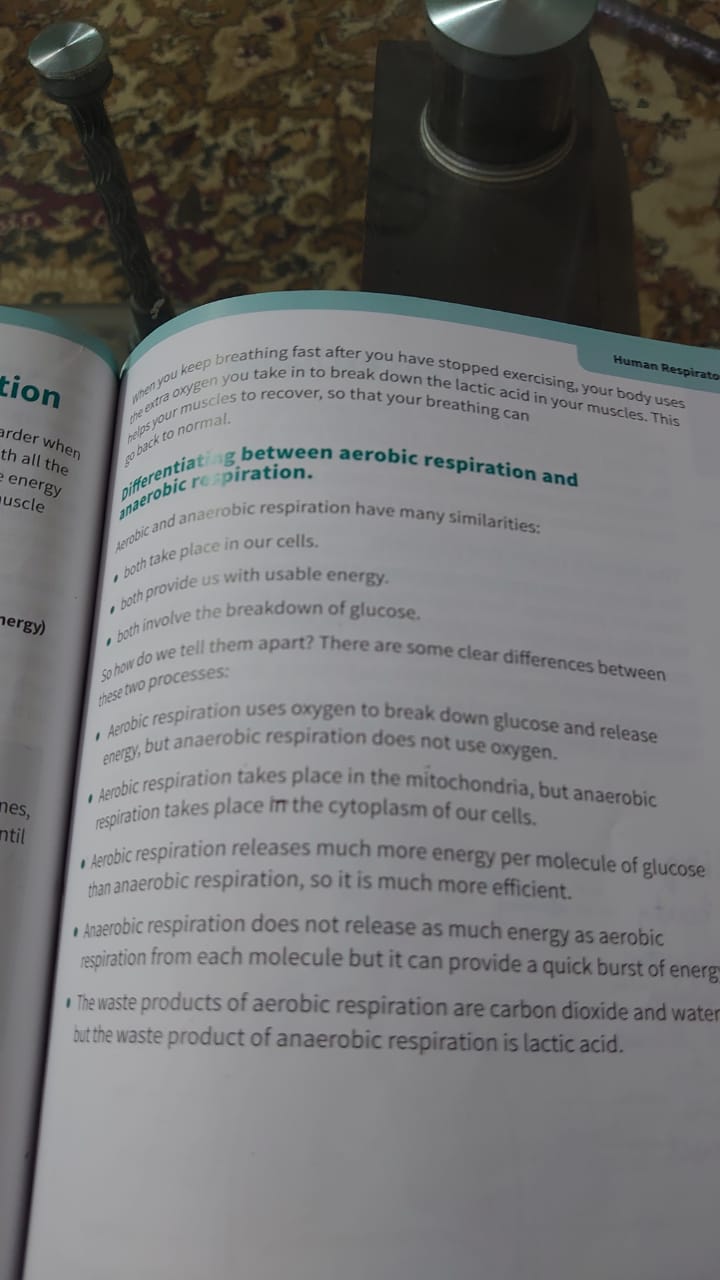What are the differences between aerobic respiration and anaerobic respiration?

Understand the Problem
The question is asking to distinguish between aerobic and anaerobic respiration, highlighting their differences in process, location, energy production, and waste products.
Answer
Aerobic uses oxygen and produces more energy; anaerobic doesn't use oxygen and produces less energy.
The main differences between aerobic and anaerobic respiration are the presence of oxygen and the amount of energy produced. Aerobic respiration requires oxygen and generates more energy and occurs in the mitochondria. Anaerobic respiration does not use oxygen, generates less energy, and occurs in the cytoplasm.
Answer for screen readers
The main differences between aerobic and anaerobic respiration are the presence of oxygen and the amount of energy produced. Aerobic respiration requires oxygen and generates more energy and occurs in the mitochondria. Anaerobic respiration does not use oxygen, generates less energy, and occurs in the cytoplasm.
More Information
Aerobic respiration is more efficient and occurs in the mitochondria, while anaerobic respiration provides a quick energy burst and occurs in the cytoplasm.
Tips
A common mistake is to think aerobic respiration is always faster. It actually releases energy more slowly but more efficiently.
Sources
- Aerobic And Anaerobic Respiration - Major Differences - BYJU'S - byjus.com
- Difference Between Aerobic and Anaerobic Respiration - geeksforgeeks.org
AI-generated content may contain errors. Please verify critical information